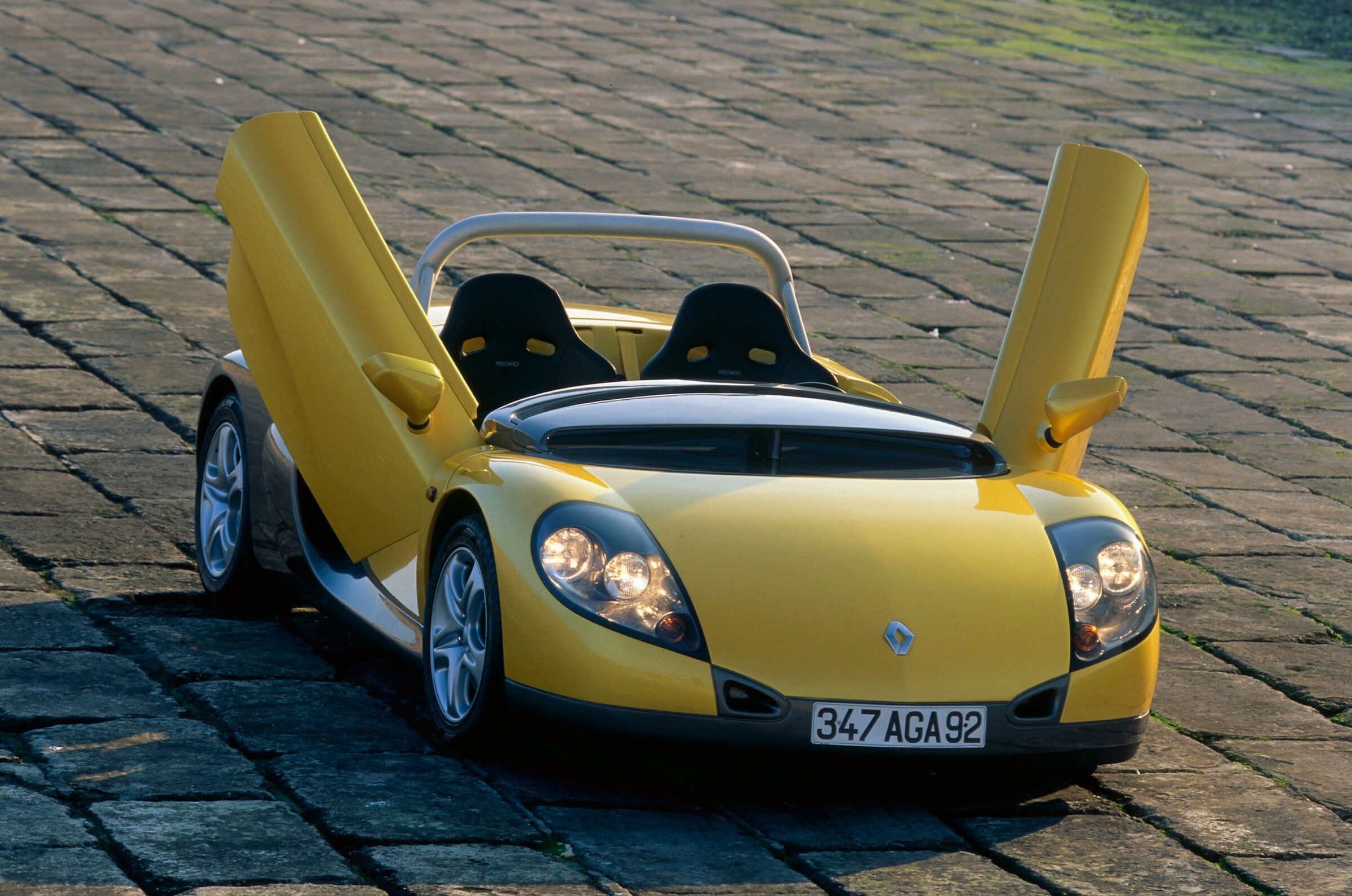Renault Clio Williams
Sporty compact cars – hot hatches – were part of the model portfolio of more and more manufacturers from the late 1960s onwards. This tradition reached a peak in the 1990s in particular, when even small cars were offered with high engine power. One example of this was the Renault Clio 16V from 1992, with which the French brand also competed in rallying. To make the rally car even more competitive, the corresponding newly developed parts had to be homologated with a road car. For this purpose, the Clio Williams made its debut in 1993. With the epithet, Renault at the same time honored the good cooperation with Williams Racing in Formula 1. Since 1989, the French had supplied V10 engines to the racing team of Frank Williams. Unfortunately, the former team boss, who had been paraplegic since an accident, recently died at the age of 79.
New 2-liter engine
The road version of the Clio 16V produced 99 kW/135 hp from a 1.7-liter naturally aspirated four-cylinder engine. The Clio 16S was built on this basis for the French market only. This vehicle was successful in the French rally championship and beyond. For the Williams, Renault developed a two-liter engine that increased output to 110 kW/150 hp. In combination with the manual five-speed transmission and an unladen weight of just 990 kilograms, this enabled good driving performance. The sprint from standstill to 62 mph took 7.9 seconds. Intermediate acceleration from 80 to 120 kph (50 to 75 mph) in fourth gear took 7.8 seconds. In data sheets the topspeed was 134 mph. Advertisements carried the headline, “You may blush with shame, turn green with anger, but it’s a Clio that Frank Williams named.”


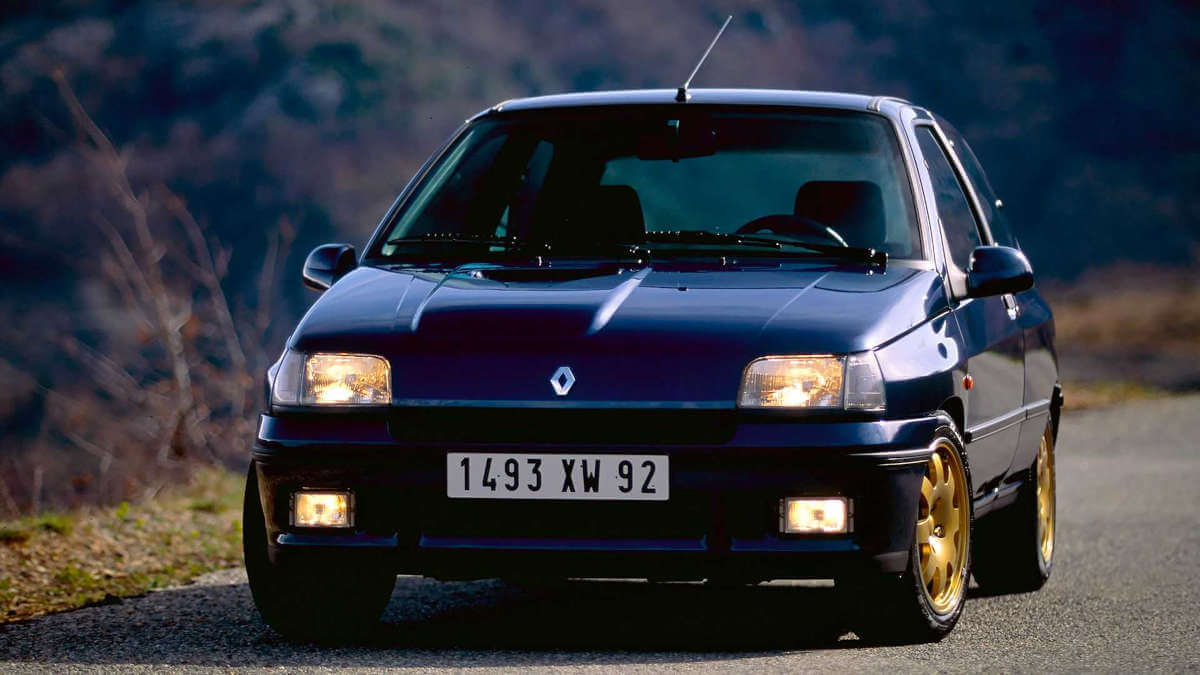

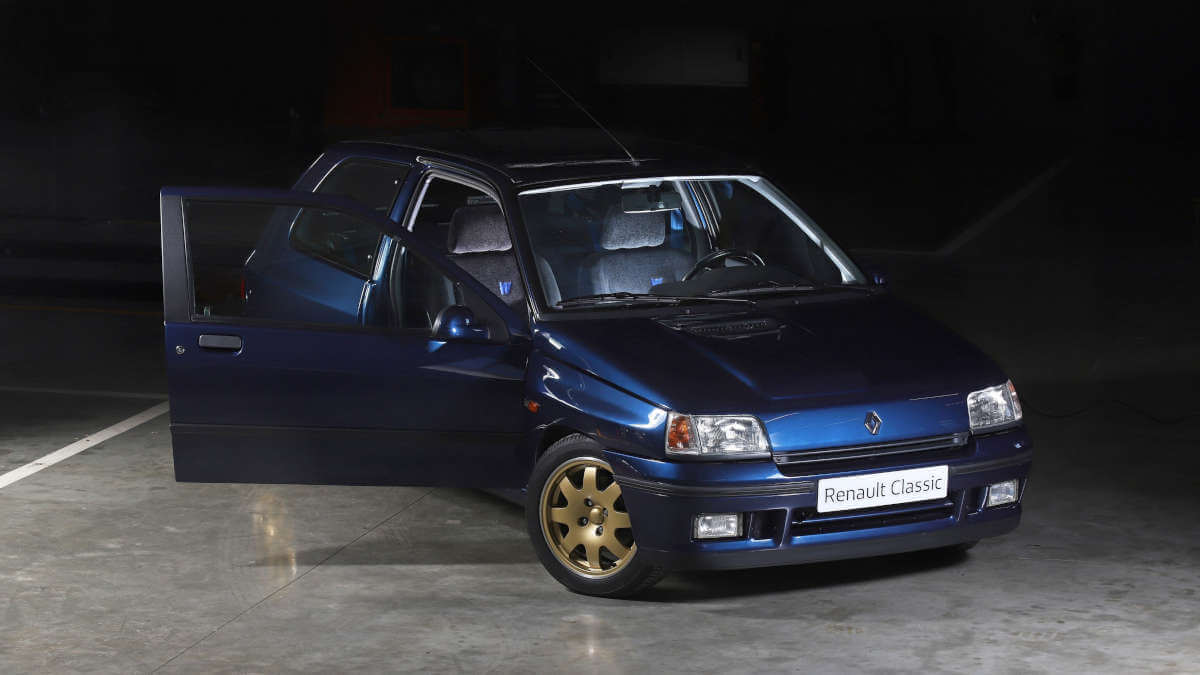





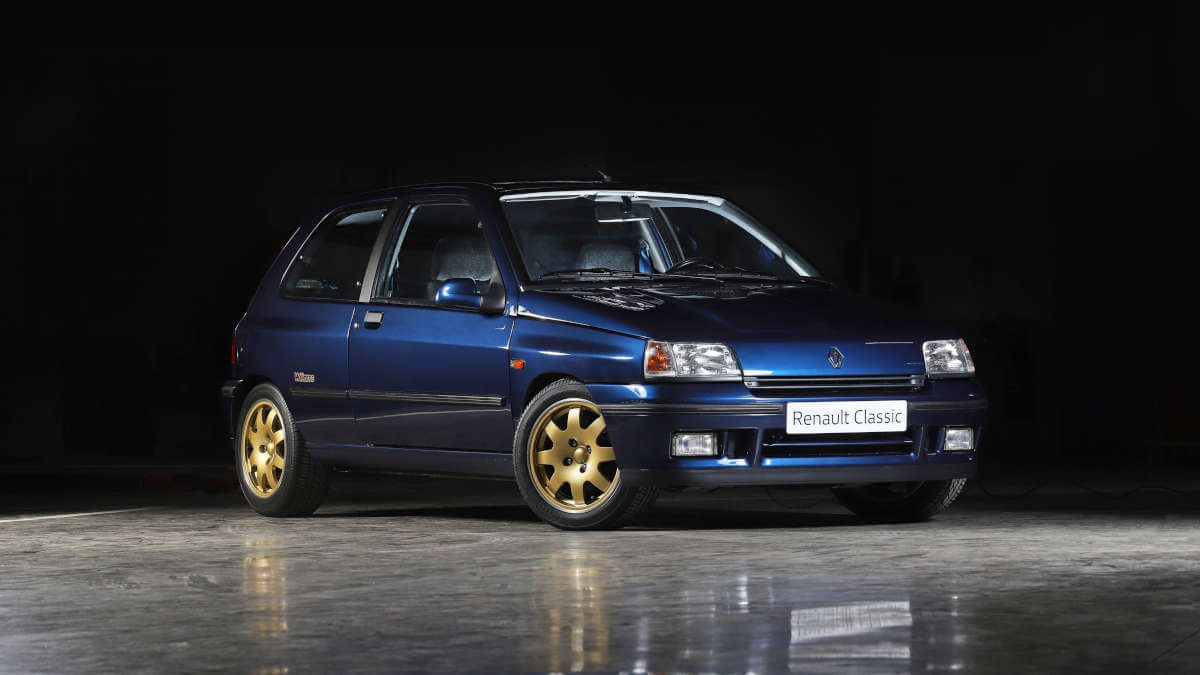





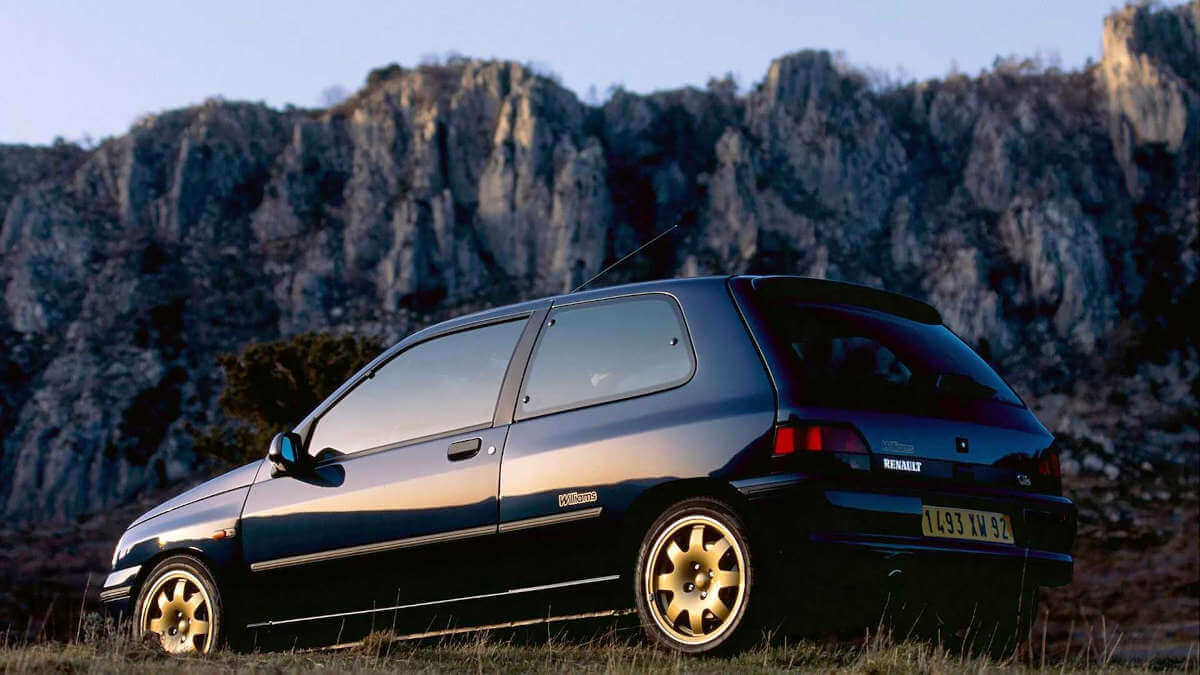

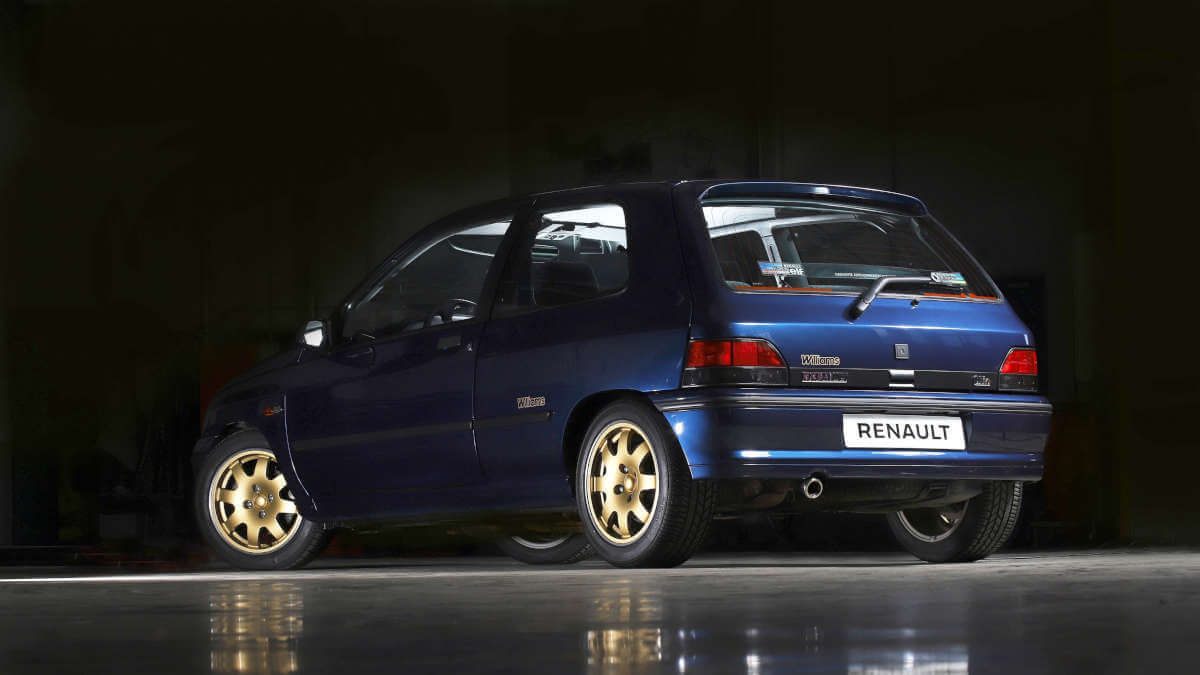

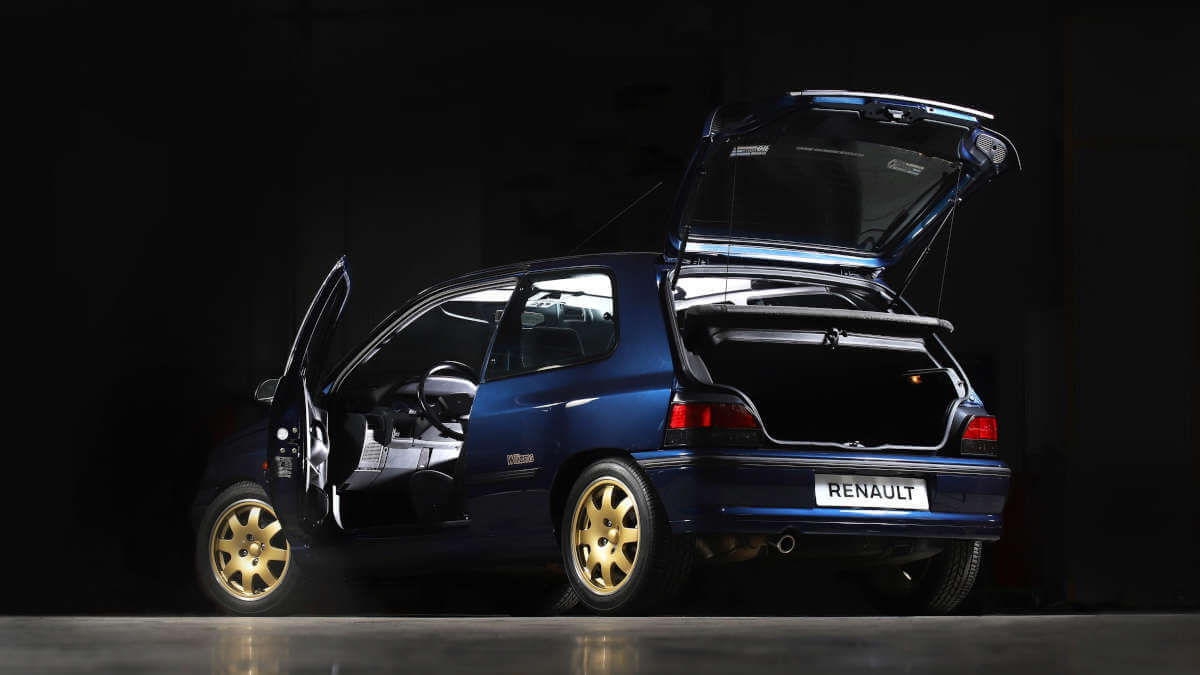





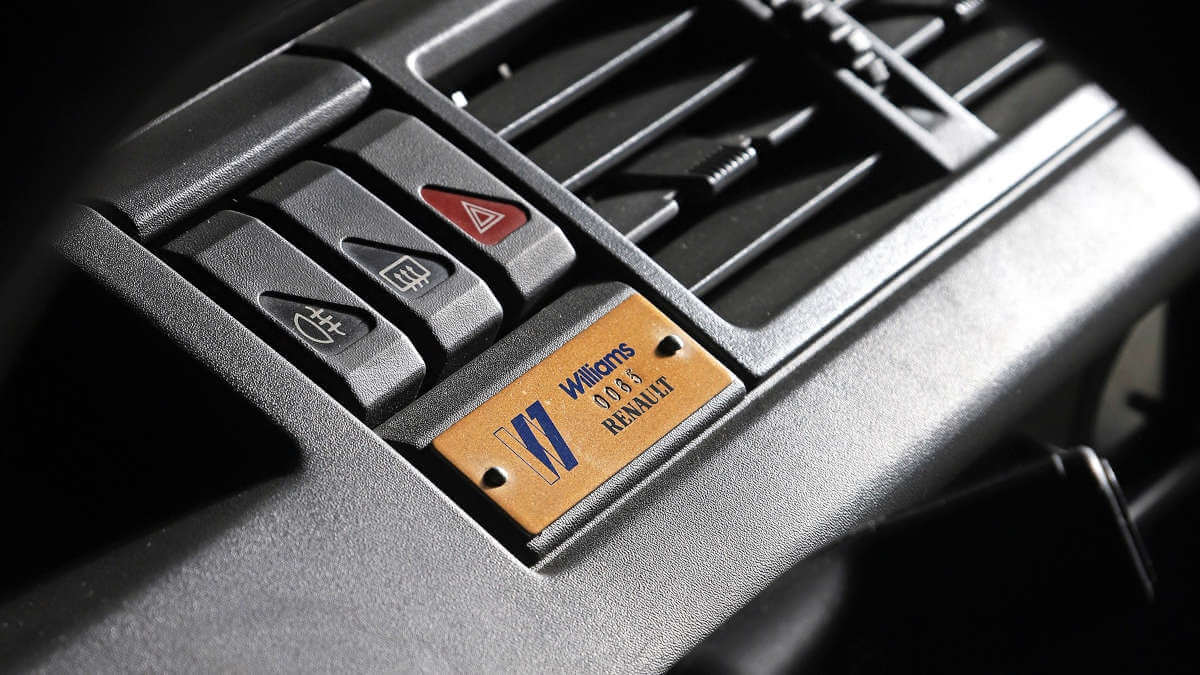











Valuable small car
Extensive standard equipment on the Clio Williams included front half bucket seats, blue speedometer dials and blue carpet inside. On the outside, the car received widened fenders, a wider front axle and gold-colored alloy wheels from Speedline. The body was painted exclusively in a dark metallic blue. However, the small sports car was by no means inexpensive to buy. In Germany the price was 34,000 DM, in France 130,000 Francs. Nowadays, well-preserved examples are again in this range, but converted into euros. The so-called Phase 1, i.e. the first 4,500 vehicles cost more than the later Phase 2, but you have to reckon with at least € 15,000 if you want to put a Clio Williams in your garage.
Limitation wasn’t enough
To meet the homologation guidelines of the FIA for the Formula 2 of the World Rally Championship, at least 2,500 units of the Clio Williams were necessary. However, Renault already suspected during development that the compact sports car would sell well with its qualities and big name. Therefore, the company generously planned for 4,500 consecutively numbered cars. A small metal plaque on the dashboard showed the individual number. In the end, the number of orders received was so good that a Phase 2 car had to be initiated. This received minor visual modifications to the grille, side lettering and taillights. The plan was to produce another 2,500 units, but this turned out to be around 7,100. 500 vehicles followed at the end of the production run as the “Swiss Champion” edition.
Images: Renault



